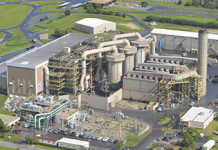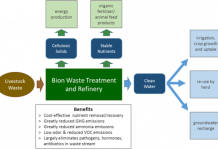"We have over 200 years of coal reserves, and we have to/will use them."
I have heard some variation of this line far too many times, and I have little patience for it. Here’s why:
- We don’t have over 200 years of reserves. The real number for economically accessible coal is less than half that.
- A square, 100 miles on a side in the Southwestern deserts of the US could meet the electricity needs of the entire nation, if solar energy were converted to electricity at 10% efficiency. There’s a lot of desert in the Southwest, and we’re never going to run out of sunshine. A similar argument can be made about the wind in the Dakotas plus Texas, Kansas, and Montana, although wind could only meet our electricity needs 2 or 3 times over, rather than thousands of times over, as is the case for solar. Clearly this does not mean that we have to or will meet all our energy needs with either solar or wind.
- Just because you have something does not mean it’s a good idea to use it. Saying we need to use our coal reserves is like a diabetic saying he has a cupboard full of candy bars, and he needs to eat them.
- Even if all the emissions from coal are somehow managed, using coal will continue to have serious environmental impact from mining, which will only increase as we mine more and more challenging deposits.
Last week, I heard Howard Herzog of Massachusetts Institute of Technology speak on the economics of Carbon Capture and Sequestration (CCS). Dr. Herzog is one of the authors of The Future of Coal, a report that advocates greater research into CCS "because it allows significant reduction in CO2 emissions while allowing coal to meet future energy needs." Nevertheless, he provides some excellent numbers on the costs of CO2 Capture and Storage, and the remainder of this article will look at those numbers, that most "clean coal" advocates don’t usually like to talk about.
Research
Dr. Herzog was clear that CCS is still in the research stage, and needs considerably more research to become commercially viable (even if there were a regulatory framework to induce power plant owners to install CCS equipment on their new coal plants.) How much will it cost? $1 billion a year for in excess of a decade, he said in response to an audience question. He also noted that he has since inflated all the costs from the MIT study by around 50% because of the extraordinary rise in the costs of materials and labor in the two years since the study was published.
The $1 billion dollar a year research price tag is slightly higher than that called for by another interdisciplinary MIT Study, The Future of Geothermal Energy over a similar period. This study found that with a combined public/private investment of about $800 million to $1 billion over a 15-year period, EGS technology could be deployed commercially on a timescale that would produce more than 100,000 MWe or 100 GWe of new capacity by 2050. This amount is less than the cost of a single, new-generation, clean-coal power plant without CCS (300-500 MWe.)
Cost of Capture and Storage
Dr. Herzog presented estimates of the expected efficiency losses for coal plants that would be needed to sequester 90% of the carbon emitted. Depending on the technology choices, the parasitic energy requirements of CO2 capture and compression would be between 19% (IGCC with CCS) and 24% (Pulverized coal plant with Amine capture) of the power produced. In addition to raising the cost of electricity from coal, CCS would therefore also effectively reduce the amount of coal available to meet our electricity needs by at least one fifth, transforming the 100 years of coal reserves we have at current rates of use into only 80 years or less of reserves. This would also magnify the effect of coal prices rises on the cost of electricity by a similar factor. Unless we reduce our demand for coal, price rises will be inevitable as producers move to harder-to-extract reserves. According to the Energy Information Administration, the price of coal for electricity increased from a relatively stable price of slightly less than $30 per metric ton before 2004 to over $38 per metric ton in 2006. Most other countries saw similar increases.
By adding CCS to a coal plant, Dr. Herzog expects the levelized cost of energy (LCoE) from coal would increase between 36% and 61%. If the technology becomes mature, he expects it to add 2-3 cents (2005$) per kWh to the price of electricity from coal. For comparison, according to the geothermal study referenced earlier, even low grade geothermal sites such as might be built in New Hampshire (a state with geothermal resources previously considered negligible) would have a LCoE of between 7 and 10 cents per kWh. High grade sites such as Kelseyville in California would have an LCoE of around 3-4 cents per kWh, comparable with the cost of CCS alone.
Some costs of CCS which Dr. Herzog did not analyze were the costs of getting the CO2 to a location suitable for sequestration, the costs of long term stewardship of the CO2 reservoir, and pipeline transport of CO2 to the reservoir. Given the uncertainty about how a carbon sequestration industry might look, it is currently very difficult to say what they might be. Over the long term, who will take responsibility for ensuring that sequestered carbon stays where we put it? How likely is the emergence of a dedicated NUMBY (Not Under My Back Yard) movement? CO2 is not as dangerous as the radioactive waste that the United States still lacks a suitable place to store, but it still can have toxic effects on marine life.
Conclusion
We will have to produce our electricity without coal at some point, either because we choose to in order to avoid further global warming, or because we simply run out of coal. Given the uncertainties about carbon sequestration, and the certainties about the cost of performing sequestration, it makes sense to spend our limited research dollars on technologies which are likely to be more benign on the environment. Enhanced geothermal has the potential to provide significant baseload power, while Concentrating Solar Power with thermal storage has the potential to power our entire nation many times over with both peaking and baseload power. Concentrating Solar Power with storage has been successfully demonstrated, and requires no mining for a limited fuel supply, while wind is already cheaper than IGCC even before adding the costs of capture and sequestration..
Source: Trans-Elect, LLC, testimony before the Colorado Public Utilities Commission (July 24, 2007). PTC=Production Tax Credit.
Perhaps coal with CCS will be part of the route we take on the road to a clean energy supply. However, it is far from the only route to take, and given the uncertainties and ongoing harmful effects of mining for coal regardless of what happens to the emissions, there are many other candidates more deserving of limited research dollars. The same holds true for our investment dollars.
DISCLAIMER: The information and trades provided here are for informational purposes only and are not a solicitation to buy or sell any of these securities. Investing involves substantial risk and you should evaluate your own risk levels before you make any investment. Past results are not an indication of future performance. Please take the time to read the full disclaimer here.










Where and to whom was the speech given? -eric
July 23, 2007, as part of NREL’s Strategic Analysis Seminar series.
The presentation should be posted here
soon. -TK